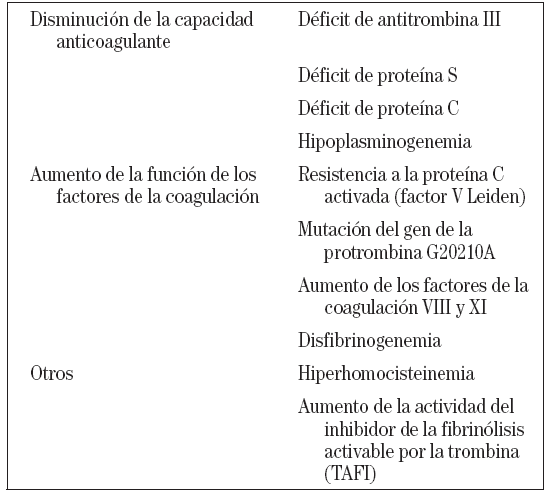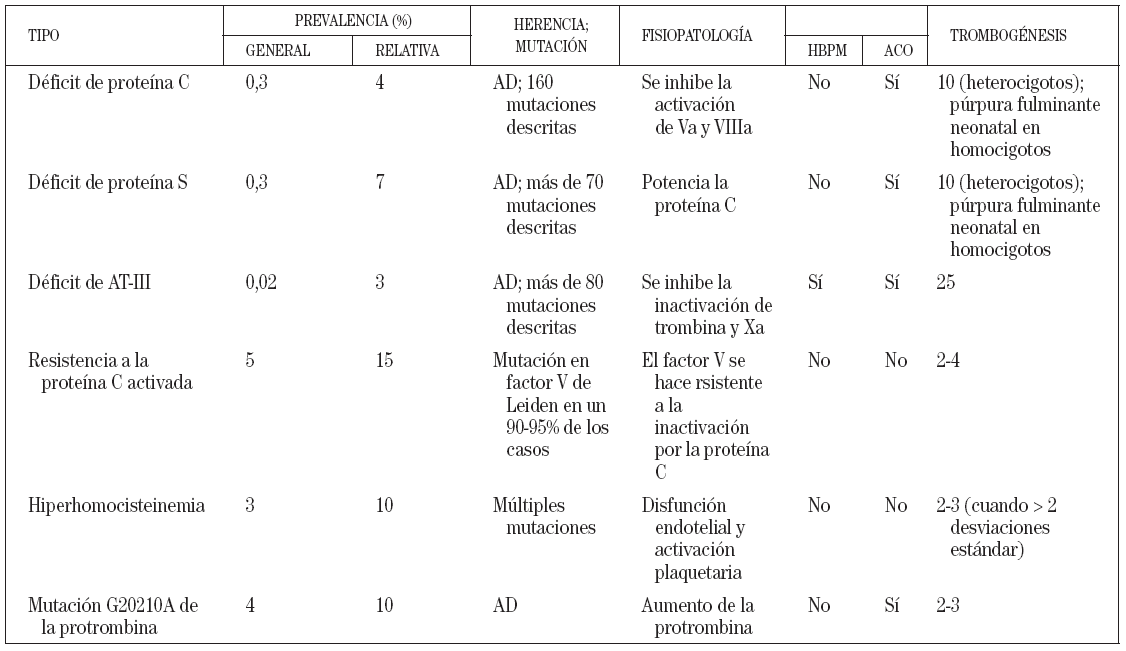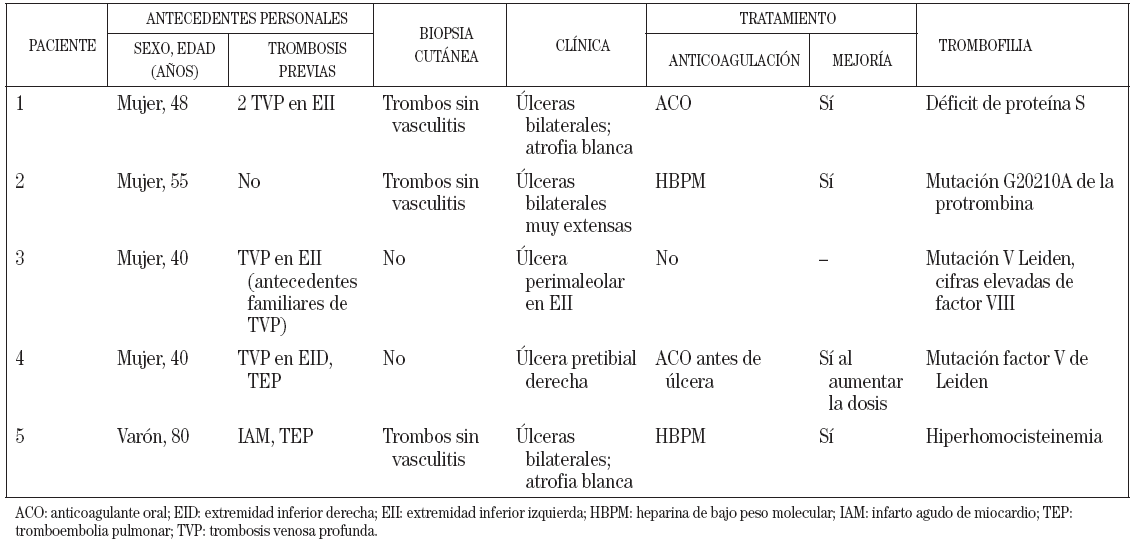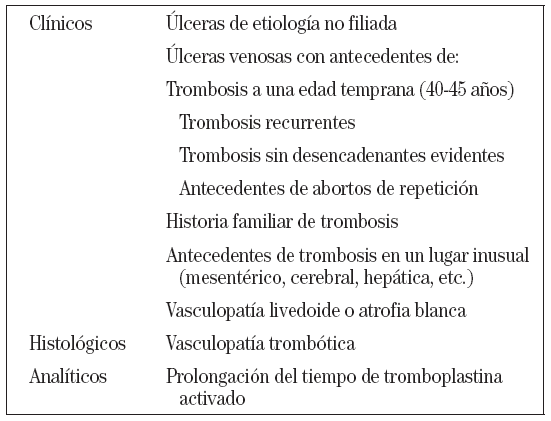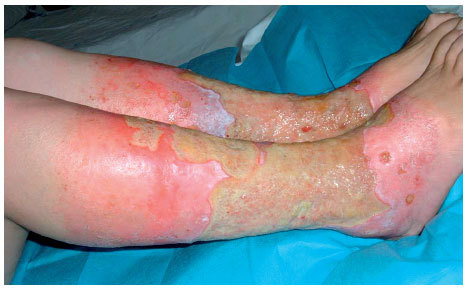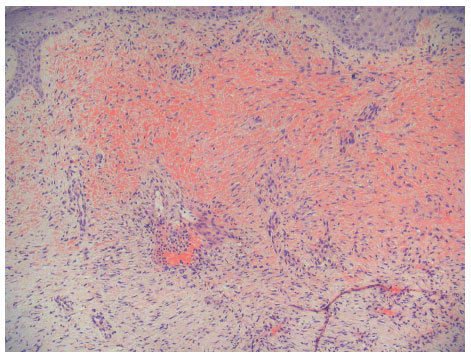Desde hace unos años se han venido publicando en la literatura dermatológica trabajos aislados sobre la existencia de trombofilias en los pacientes con úlceras en las extremidades inferiores.
Basándonos en estos estudios, decidimos investigar la presencia de estados de hipercoagulación en una serie de 5 pacientes con úlceras de larga y tórpida evolución, en los que se había descartado otras posibles etiologías y que no respondían a medidas terapéuticas convencionales. Se realizó estudio histológico en 3 de los 5 pacientes, y se demostraron trombos intraluminales en los vasos dérmicos. En los 5 casos se detectó alguna anomalía en el test de trombofilia. En 4 de ellos, el tratamiento anticoagulante con heparinas de bajo peso molecular (HBPM) o anticoagulantes orales (ACO) supuso una mejoría evidente de las úlceras.
A pesar de las limitaciones del trabajo y el escaso número de pacientes presentados, los datos obtenidos indican que las lesiones ulceradas en las extremidades inferiores pueden estar relacionadas con una trombofilia hereditaria de base.
Los factores que deben hacernos sospechar esta relación son una presentación atípica (personas jóvenes, sin factores precipitantes evidentes, con mala respuesta a los tratamientos convencionales), las lesiones con atrofia blanca, los antecedentes personales o familiares de fenómenos tromboembólicos y la presencia de trombos en los vasos dérmicos en el estudio histológico. Aunque el tratamiento anticoagulante en estas situaciones sigue siendo controvertido, en 4% de nuestros pacientes se ha asociado con una mejoría evidente de las lesiones.
In the last few years, several studies have been published in the dermatological literature on the possible association between the presence of an underlying thrombophilic defect and leg ulcers.
Consequently, we investigated this association in five patients with long standing leg ulcers, in which other causes of lower extremity ulcerative disease had been excluded and which responded poorly to conventional therapies. A biopsy specimen was obtained in three of the patients, showing thrombosis of the dermal blood vessels as a uniform histologic feature. In all five patients at least one abnormality was found in thrombophilia testing. In four of the patients, anticoagulation, with heparin or oral anticoagulation, improved the lesions.
Despite the limitations of this study and the small sample size, the data obtained suggest the need to be aware of the possibility that patients with leg ulcers may have hereditary thrombophilia. The factors that should lead to suspicion are atypical presentation of the ulcers (young people, absence of triggering factors, poor response to standard treatment, etc.), the presence of atrophie blanche, a personal or family history of thromboembolic phenomena, and the presence of dermal blood vessel thrombosis in skin biopsy. While there is a great deal of controversy regarding the benefits of anticoagulation in these patients, the lesions were responsive to this treatment in 4% of our patients.
Artículo
Comprando el artículo el PDF del mismo podrá ser descargado
Precio 19,34 €
Comprar ahora






